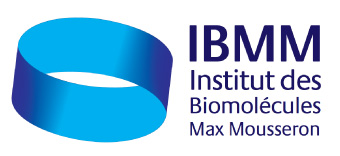Heavy mice and light things: using solid-state NMR spectroscopy to understand biological tissues in health and disease
Séminaire Chimie ICGM & ED459
Prof. Melinda J.
[rouge]SÉMINAIRE ANNULÉ (restrictions sanitaires covid)[/rouge]
Le Mercredi 08 Décembre 2021 à 11h
ENSCM, Amphithéâtre Mousseron (campus Balard, 240 av. Émile-Jeanbrau)
Date de début : 2021-12-08 11:00:00
Date de fin : 2021-12-08 12:00:00
Lieu : ENSCM amphi Mousseron (campus Balard, 240 av E. Jeanbrau)
Intervenant : Prof. Melinda J.
Department of Chemistry, University of Cambridge, UK
N.B. En raison du contexte “covid” et pour traçabilité sanitaire, les noms de toutes les personnes présentes seront relevés sur place (feuille d’émargement à l’entrée).
Abstract
The extracellular matrix (ECM) is the material that provides our biological tissues with their particular mechanical properties. At the microscopic level, the ECM is a material which physically supports cells but more intriguingly, its detailed molecular structure determines the behaviour of cells. Ultimately, if we can understand how the extracellular matrix molecular structure, dynamics and chemistry dictates the behaviour of cells, then we can develop ways to treat diseases such as cancer, by exploiting the extracellular matrix to drive the necessary change in cell behaviour. However, understanding the molecular level properties of the extracellular matrix has been hampered by the lack of methods to study tissues at the atomic scale. In this talk, I will describe how we have integrated solid-state NMR spectroscopy approaches with various microscopy methods to tackle these complex questions.
The first requirement is native-like tissues in which we can control isotope labelling patterns so that we can record assignable multidimensional NMR spectra. Using multidimensional solid-state correlation NMR spectra (13C-13C, 13C-15N) as fingerprints of the underlying molecular structures in isotope-labelled native tissues has allowed us to develop laboratory-grown tissues that have very similar molecular structures to native tissues, and thus represent demonstrably good models of native tissue.[1] The refined laboratory-grown tissues can then be manipulated by growing them with isotope labels in specific components to allow detailed study of structure and function of the various extracellular matrix components. For instance, 13C, 15N labelling Gly and Pro in the collagen component has led to the unexpected conclusion that Gly-Pro-Hyp triplets in collagen act like springs allowing the collagen helix to flex, rather than these triplets being rigid structures as they have long been assumed to be.[2]
We have now coupled this approach with NMR methods to examine calcified tissues in health, such as bone, and in diseases such as vascular calcification (hardening of the arteries). In calcified tissues, the extracellular matrix incorporates stacks of ordered nanocrystals of a complex calcium phosphate phase. Using an NMR crystallography approach, we have put forward a new model for the structure of bone mineral,[3] and now have an understanding of what chemical species control bone mineral strength. In combination with the methods described above, we now also have an intriguing insight into what initiates hardening of the arteries, which leads to a potential route to prevent this condition, the major cause of cardiovascular disease worldwide.
If time permits, I will also outline how our new understanding of the extracellular matrix molecular structure has allowed us to propose a new paradigm in cancer treatment.
References
1. W.Y. Chow, R. Rajan, K.H. Muller, D.G. Reid, J.N. Skepper, W.C. Wong, R.A. Brooks, M. Green, D. Bihan, R.W. Farndale, D.A. Slatter, C.M. Shanahan, M.J. Duer, Science 2014, 344, 742–746.
2. W.Y. Chow, D. Bihan, C.J. Forman, D.A. Slatter, D.G. Reid, D.J. Wales, R.W. Farndale, M.J. Duer, Sci. Rep. 2015, 5, 12556, DOI: 10.1038/srep12556
3. E. Davies, K.H. Muller, W.C. Wong, C.J. Pickard, D.G. Reid, J.N. Skepper, M.J. Duer, Proc. Nat. Acad. Sci. USA 2014, 111, E1354–E1363.
Contact local ICGM : Dr. Danielle
